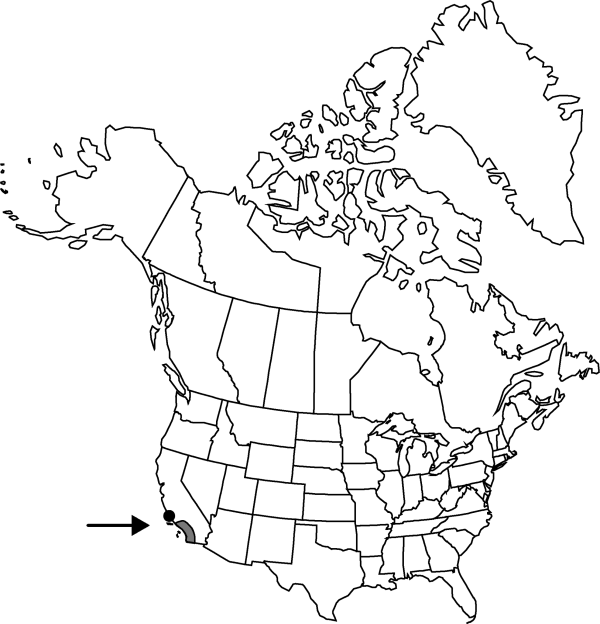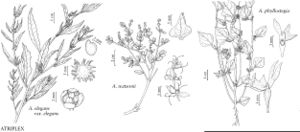Atriplex watsonii
Fl. Los Angeles, 128. 1904.
Herbs, dioecious, prostrate or decumbent, 2–10 dm. Stems forming tangled mats 1–3 m across, woody at base, white scurfy. Leaves numerous, mostly opposite; blade broadly elliptic to ovate, 8–25 mm, often surpassing internodes, thick and fleshy (when fresh), margin entire, apex acutish, white scurfy. Staminate flowers in large glomerules in naked, interrupted terminal spikes; calyx 5-cleft. Pistillate flowers in small, axillary clusters. Fruiting bracteoles sessile or short stipitate, ovate to rhombic, united to beyond middle, 4–8 mm, margin entire to erose, faces plane. Seeds light-brown, 1–1.5 mm.
Phenology: Flowering spring–fall.
Habitat: Coastal and insular bluffs, beaches, strands, salt marshes, sage scrub, with saltgrass and other salt-tolerant species
Elevation: 0-100 m
Distribution

Calif., Mexico (Baja California)
Discussion
Atriplex watsonii is a sprawling plant that exhibits much variation in leaf size, as attested in the clearly staminate type collection, Palmer 334, wherein the range in size is from 5–25 × 2.5–11 mm wide. Although typically placed adjacent to A. matamorensis, the other dioecious perennial, the two taxa are probably not closely allied. The broader-leaved phases simulate closely A. leucophylla, with which it is sometimes confused, and perhaps the relationship lies in that direction, but it closely simulates A. californica, with which it is probably most closely allied.
Selected References
None.
Lower Taxa
"thick" is not a number."/2" is not declared as a valid unit of measurement for this property.
